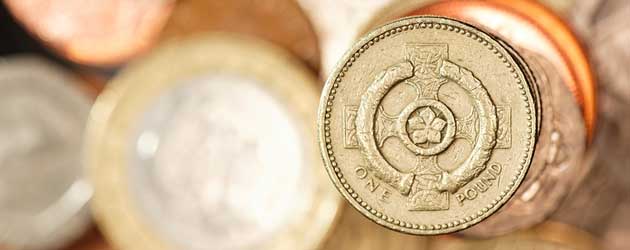
The Pound to US Dollar exchange rate fell by around -0.3 cents to 1.5080 during overnight trading as GBP/USD continued its downward bias. The safe haven US Dollar found itself supported due to a slight drop-off in Chinese output. The Chinese Leading Index fell from 100 to 99.8 in April.
With traders in the UK and the US absent from their desks on Monday the currency markets were fairly quiet with little significant movement. In fact, British economic data is thin on the ground all week and this could leave the Pound susceptible to further losses due to the cable pairing’s downward technical momentum. The only British releases on the economic calendar this week are: Nationwide House Prices, GfK Consumer Confidence, Net Consumer Credit and Mortgage Approvals.
UK House Prices are expected to remain at an annualised rate of 0.9% growth, Consumer Confidence is predicted to inch slightly higher from -27 to -26, Consumer Credit is forecast to print at £0.4 billion and Mortgage Approvals are likely to print just below 55,000.
In the United States the event horizon is a little more busy with: Consumer Confidence expected to rise from 68.1 to 71.0, GDP predicted to remain at 2.5% annualised growth, Personal Consumption forecast to rise to 3.3%, Initial Jobless Claims likely to come in at around 340,000, Pending Home Sales set to improve by 12.6% and Personal Income expected to see an uptick of 0.1%.
Whilst the British dataset is unlikely to provide Sterling with any significant support, the American schedule has the potential to boost the Dollar by increasing the chances of the Federal Reserve tapering its quantitative easing programme. A stronger-than-expected US Consumer Confidence figure combined with a lower-than-anticipated US Weekly Jobless Claims print would be the best scenario for the ‘Greenback’.
Major psychological support exists for GBP/USD at 1.5000, but any breach of this level could allow the US Dollar to knock the Pound down to 1.4830. Conversely, Sterling is likely to face technical resistance at 1.5160 and will find it difficult to break above the 1.5250 mark.
The Pound has improved slightly against the Australian Dollar over the past few days as the Australian economy was hit by news that Ford Australia is planning to close down two of its automobile factories in 2016. The plant closures, which will cost the Australian economy 1,200 jobs, are casualties of the ‘Aussie’ Dollar’s recent strength.
With manufacturing costs seen as too high and sales considered too low, the car-making giant will stick to importing vehicles from Japan, where the Central Bank’s easing scheme has caused the Japanese Yen to weaken by ¥17 over the past eight months. The recent internal devaluation of the Yen, which is a byproduct of the Bank of Japan’s unprecedented stimulus efforts, has made cars that are assembled in Japan significantly cheaper to purchase for Australian consumers than those produced on their own soil.
At just below 1.5700 (GBP/AUD), the Pound to Australian Dollar exchange rate has increased by around a cent since Ford announced the planned closures to the factories in Australia.

Comments are closed.